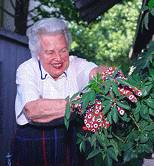
THURSDAY, Nov. 17 (HealthDay News) — More Americans are living to 90 and beyond, and by 2050 their ranks could reach almost 9 million, a new U.S. Census Bureau report finds.
In fact, the number of nonagenarians has nearly tripled — from 720,000 in 1980 to 1.9 million in 2010, researchers found.
Most of them — 74 percent — are women, particularly white women who live alone or in nursing homes, according to the report.
“The older population is aging rapidly and people have to prepare for a higher probability of living to 90 and adapting their lifestyle and savings behavior to that fact,” said Richard Suzman, director of the division of behavioral and social research at the U.S. National Institute on Aging, which commissioned the report.
“In addition, we need to redouble efforts at finding ways to prevent and treat dementia and frailty,” he said.
Those people living to 90 and beyond are the fastest-growing group in the older population, Suzman said. “This is in part due to the size of older cohorts coupled with increases in life expectancy,” he said.
Because of the rapid growth in the number of 90-year-olds, the report also suggests that the definition of the oldest of the old be changed from 85 to 90.
Among other demographic features of this 90-plus population: Most are widowed white women living alone or in a nursing home. Most are high school graduates. Almost half of their income comes from Social Security and almost all are covered by Medicare and/or Medicaid. Most have one or more disabilities.
Although more older people are living alone, it does not mean they are healthy or independent, Suzman said. Many are living in assisted living facilities or have other home services such as visiting nurses, meals-on-wheels or help from family, he said.
Highlights of the report include:
- Average life expectancy for a 90-year-old today is 4.6 years vs. 3.2 years in 1929-31. Those who live to 100 have a life expectancy of another 2.3 years.
- Most (85 percent) of those 90 and older say they have one or more physical limitations. About 66 percent have difficulty walking or climbing stairs.
- Nearly 20 percent of those aged 90 to 94, 31 percent of those aged 95 to 99 and 38 percent of those aged 100 or older live in nursing homes, compared with about 3 percent of those aged 75 to 79.
- Women 90 and older outnumber men by almost three-to-one. From 2006 to 2008, women made up about three-quarters of those aged 90 and older.
- Whites make up 88.1 percent of those aged 90 and older. Blacks make up 7.6 percent, Hispanics 4 percent and Asians 2.2 percent.
- The annual average income for people aged 90 and older was $14,760. Men had a higher income than women — $20,133 vs. $13,580. Social Security made up about 48 percent of total income.
Dr. Robert Schwartz, professor and chairman of Family Medicine & Community Health at the University of Miami Miller School of Medicine, said that “the real issue here is that people are living longer, but unfortunately the healthy 90-year-olds are few and far between.”
Most of Schwartz’s old patients have common problems of aging such as hearing loss, eye problems, dementia and cardiovascular disease, he said. “This represents a problem as we go into the future, because elderly people consume a huge portion of the health care dollar and that’s only going to increase,” he said.
Schwartz noted that people are living longer for a variety of reasons including better diet, medical care, fewer accidental deaths in the workplace and better emergency care for acute conditions such as heart attack.
More information
For more on healthy aging, visit the U.S. Centers for Disease Control and Prevention.

